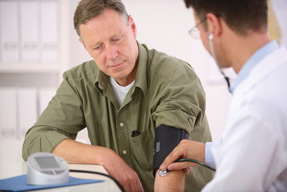Potential changes questioned for advanced cardiac life support
The Advanced Cardiac Life Support guidelines are due out in 2015 and may pose some shocking changes: faster beats-per-minute chest compressions, a de-emphasis on hypothermia, and a new length of time for continuing cardiopulmonary resuscitation.
The American Heart Association might want to start looking for a song with a faster tempo than “Stayin’ Alive.”
In a few years' time, that 100-beats-per-minute Bee Gees tune may no longer be the one experts recommend rescuers sing while giving chest compressions, said Michael O’Connor, MD, chief of the critical care section in the department of anesthesiology at the University of Chicago Medicine, during the Society of Critical Care Medicine's Annual Congress in San Francisco in January.

Recent research indicates that chest compressions may be most effective at 125 beats per minute, since this is the rate at which spontaneous circulation is most likely to return in out-of-hospital cardiac arrest patients, he noted, citing a June 2012 study in Circulation.
“Patients with a return of spontaneous circulation have the best probability of [surviving to] discharge,” Dr. O’Connor said. “The compression rate may be changed in the next iteration of the [Advanced Cardiac Life Support] guidelines.”
The Advanced Cardiac Life Support (ACLS) guidelines are due for an update in 2015. They are published every 5 years by the American Heart Association and the International Liaison Committee on Resuscitation.
Another big change on the horizon may be a de-emphasis on hypothermia after cardiac arrest, he noted. This is due in large part to the landmark December 2013 study in the New England Journal of Medicine that found no difference in outcomes for patients whose body temperature was cooled to 33 degrees Celsius compared to 36 degrees Celsius.
“This basically confirmed the concerns of a 2011 [Critical Care Medicine] study that hypothesized that any perceived benefit to hypothermia was actually showing a difference in outcomes between patients who had fever and those who didn't,” he said. “The [NEJM] finding is important because hypothermia is logistically difficult and expensive. This is not the last word, but it certainly will change practice at many institutions.”
Indeed, at his own facility, “We are now much less enthusiastic about cooling. If we cooled 30% to 40% of the time before, my guess is that by next year we will be cooling about 10% to 20% of the time,” he said.
Instead of aiming for a below-normal body temperature, the emphasis should be on reducing fever when it's present, he added. “To me, it seems like 36 or 37 degrees is a reasonable target. It's much easier to seek that target than 33 degrees. Essentially, aim for 36 and if they are hotter, cool the fever,” Dr. O’Connor said.
Also important to address in future guidelines is how long to continue CPR, in light of recent research that longer durations increase chances of survival, he said. A 2012 Lancet study found that performing CPR on inpatients up to 45 minutes more often led to a return of spontaneous circulation, especially in patients with ventricular tachycardia and ventricular fibrillation.
Adding steroids to vasopressors and epinephrine in patients with cardiac arrest may also soon become common practice, Dr. O’Connor said, citing a July 2013 JAMA study. The same goes for using extracorporeal membrane oxygenation (ECMO) in patients with simple cardiac arrest. “It's a bust for sepsis with [acute respiratory distress syndrome], but we've had lots of success with ECMO in patients with straight-up cardiac arrest,” Dr. O’Connor said.
Future guidelines also should address the fact that the nature of cardiac arrest differs by location and age. Most arrests out of the hospital are due to cardiac reasons, while in the hospital they usually have a noncardiac cause, he noted, a distinction that has important treatment implications.
Regardless of whether any of these topics are updated in the 2015 ACLS guidelines, physicians should be thinking about them seriously, Dr. O’Connor said.
“About 10% to 20% of the ACLS recommendations are based on randomized controlled trials. Most of the recommendations are level B [case series, historical controls, etc.], or level C [expert opinion],” Dr. O’Connor said.



